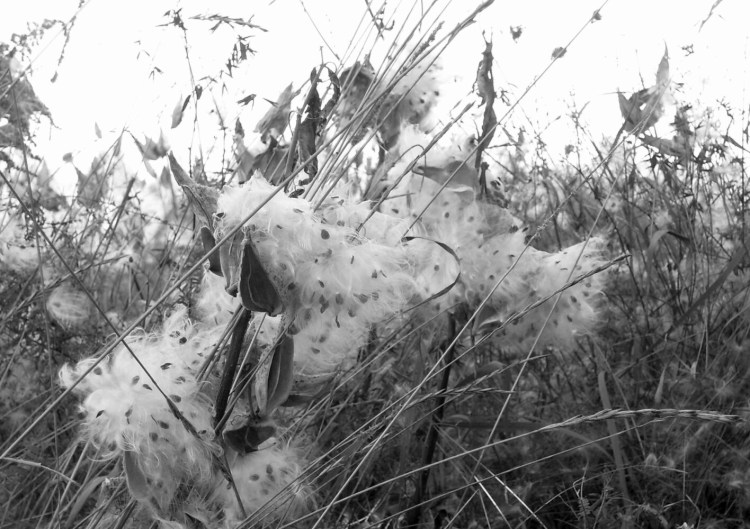Now the long decline toward winter has ceased being an autumn flourish and started to look inevitable. The world is literally dying.
The fields that turned from May-green to midsummer rust and then to hay are now expanses of stiff, dead grass and gray goldenrod. Milkweed pods have cracked and sent off wispy seed wraiths and are shriveling on the stalks.
The trees look like gray skeletons. Bony limbs and bare trunks stretching up hillsides and into untold miles of woods — you can’t quite believe winter could undo so many so completely. But there they are by the thousands, sapless and naked, empty and deep at the same time, as if keeping something back. The firs and spruces seem clothed for the coming cold, but the maple, birch and ironwood leaves are strewn on the ground ready to return to dirt.
The leaves die by a process called senescence — which means growing old — brought on by declines in daylight and warmth. With less light, the tree manufactures less chlorophyll, which in summer makes the leaves green. Other chemicals also slow production, and cells between the base of the leaf and twig start to die. The dead cells thicken until they’re brittle, and the leaf breaks off. A large maple tree can lose a quarter million leaves. When they’re gone just the skeleton of limbs and branches remains, except for some whose marcescent leaves, like on oaks and beeches, cling to the twigs well into winter. No less lifeless, though. Leaf ghosts.
The effect of this on your eye is a premonition of winter that turns into a chill in your spine. Winter bears an uncanny resemblance to death, or an idea we have of death, none of us having experienced it yet. That we remember, anyway. Or maybe we do. Right at the end of October, when the woods and fields look this bare and lifeless, the ancient Celts saw the end of the year. The next day began their new year and in Christianity became All Saints Day. And that night before became “All Hallow’s Eve,” which we shorten to Halloween.
The Celts called it Samhain, and held a festival of the dead. It was thought that in the transition from the death of the old year to the birth of the new, the boundary between the otherworld, where the departed spirits dwell, and the natural world, where we live, thinned to brittle and broke. The spirits of the dead could cross over to the world of the living, and vice versa, in that weird moment. To stave off whisperings that could harrow up your soul or freeze young blood, people in places like Scotland and Ireland impersonated the departed with masks and odd clothing. Large turnips were carved with faces as sentinels to scare off spirits. Later in North America, pumpkins worked even better.
Here in the 21st century world of commerce and relaxed religion, All Hallows’ Eve has shriveled into a lark for children. But still, the natural ghosts of goldenrod and naked maples lurk all around like departed spirits. There are times when you could almost think that just unseen in the woods there toward the cemetery, or trapped in the attic making rustling sounds, an apparition in the shape of a skeleton like a pile of dishes or a chandelier, with tongues of fire licking along its upper teeth and smoke rolling in its eye sockets, had crossed to where it shouldn’t be.
Or shouldn’t it? Can’t we know what the dead are keeping back? Yes, the dead are keeping something back. It happens every year, it’s inevitable and all around us. You can see it there in the woods.
Dana Wilde lives in Troy. You can contact him at naturalist1@dwildepress.net. His recent book is “Summer to Fall: Notes and Numina from the Maine Woods,” available from North Country Press. Backyard Naturalist appears the second and fourth Thursdays each month.
Copy the Story LinkComments are not available on this story.
Send questions/comments to the editors.


